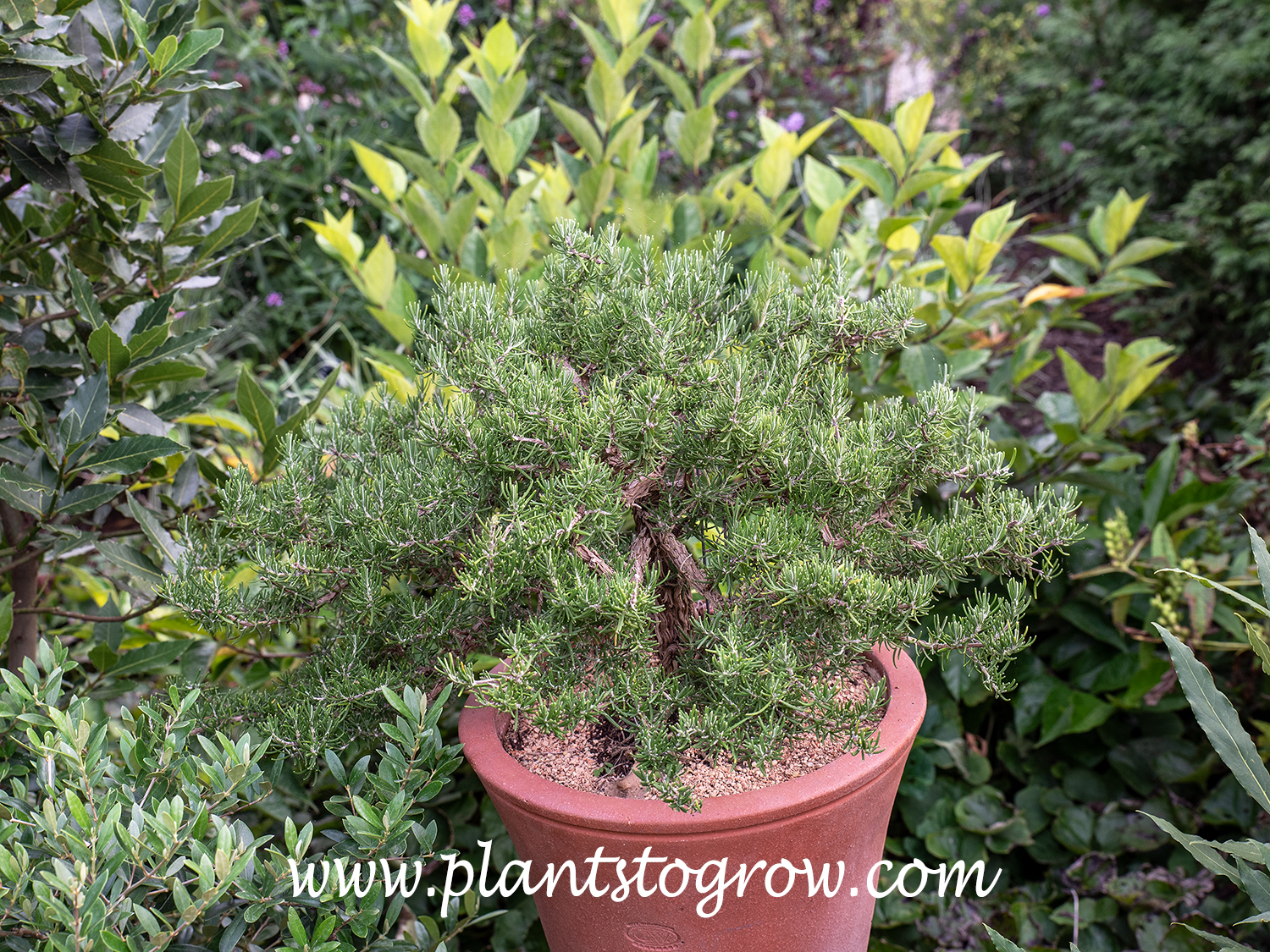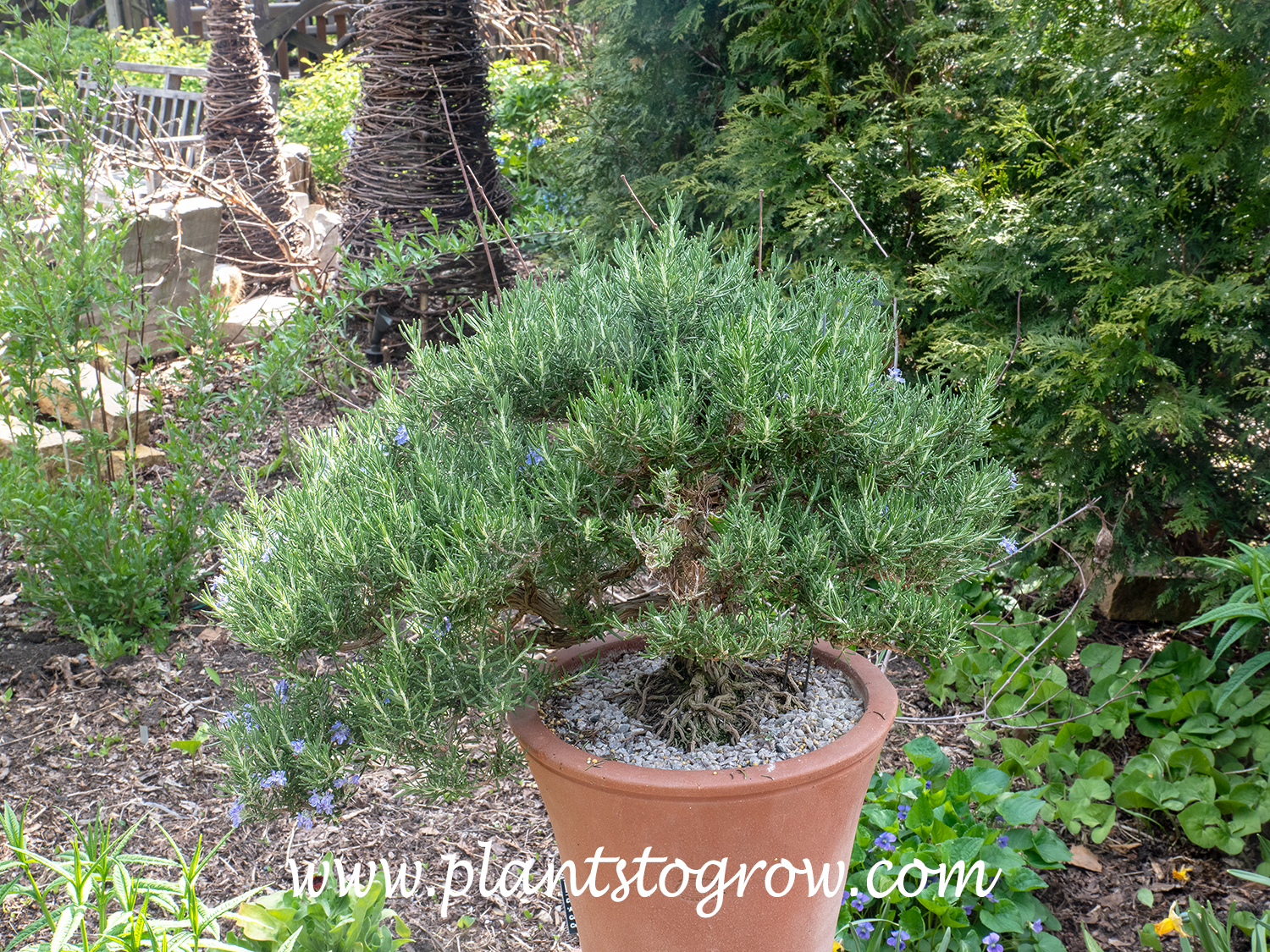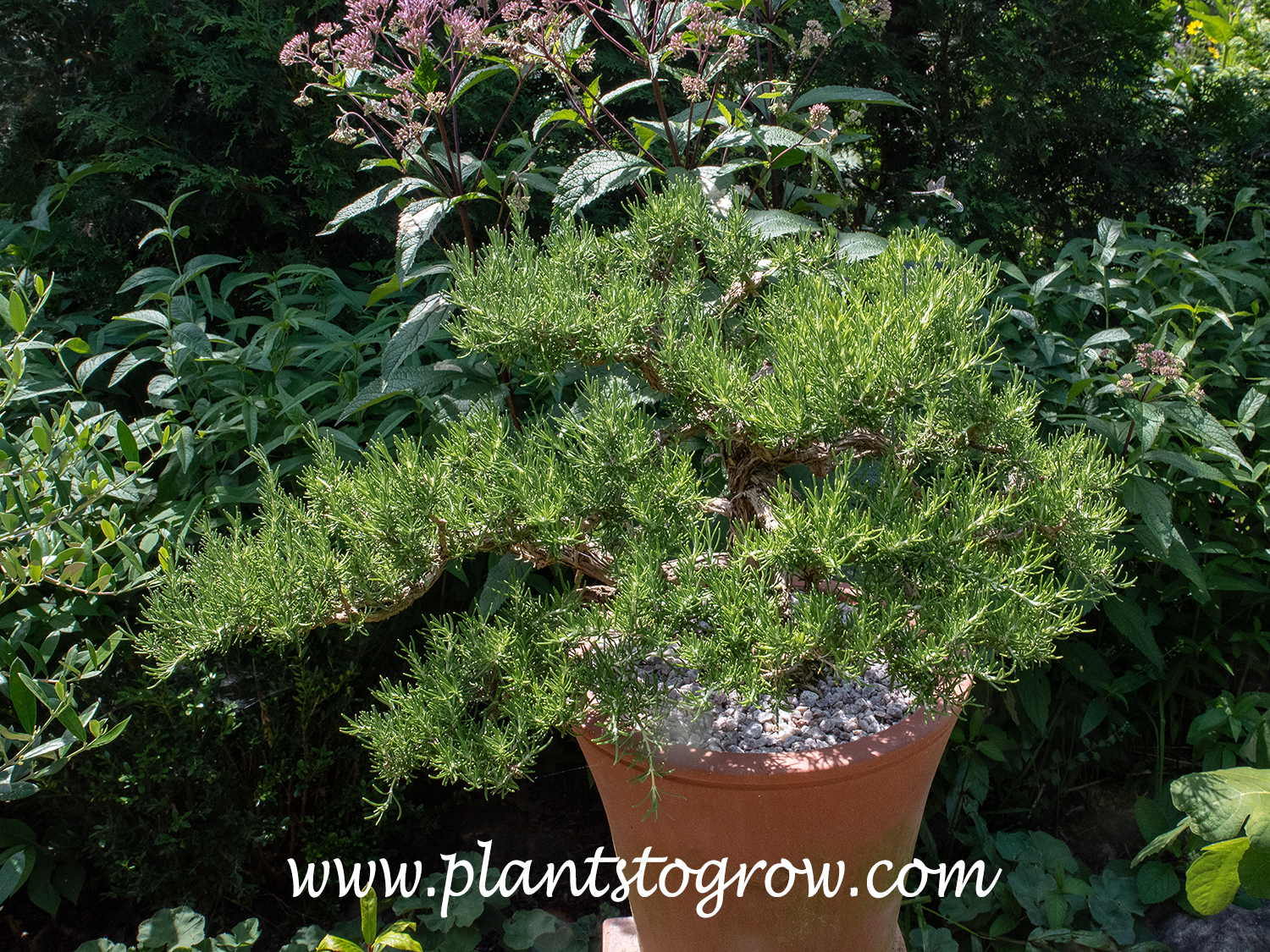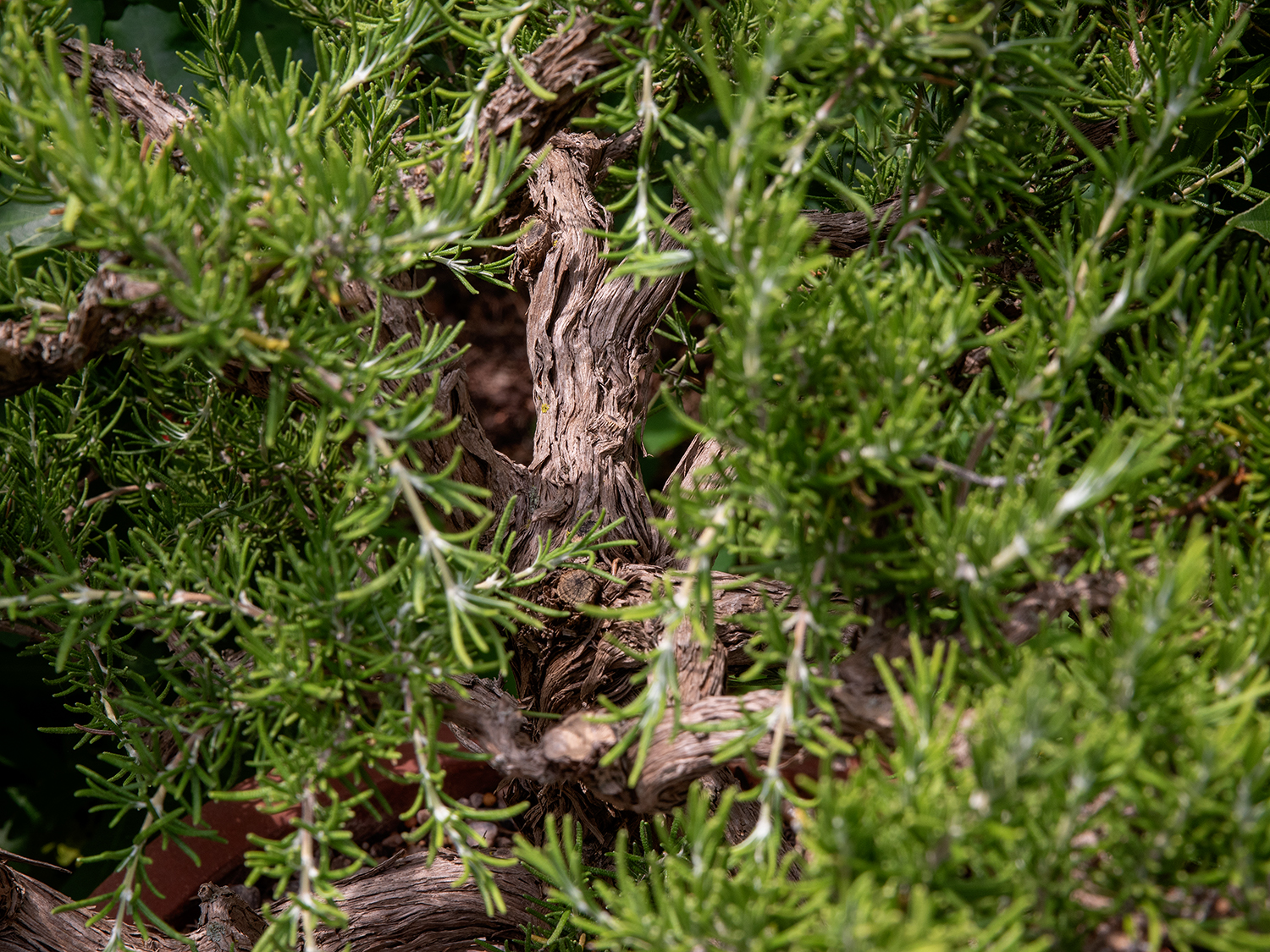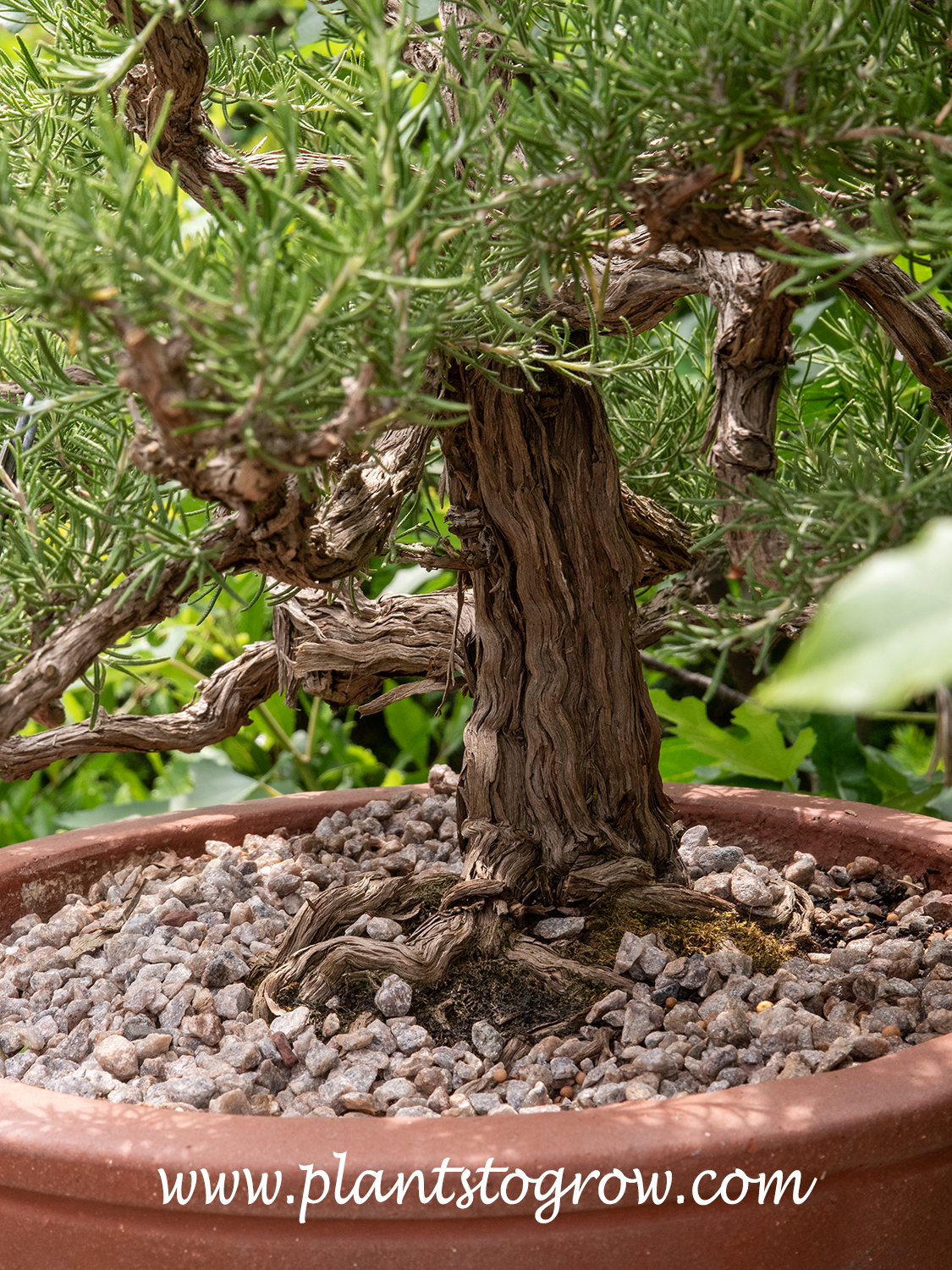| Description | Roman Beauty Rosemary (Rosmarinus officinalis) has an arching habit allowing it to drape over the sides of pots. It is a tender perennial that is commonly grown for cooking. Also called Chefs Choice Rosemary. |
|---|---|
| Pronunciation | (rose-ma-REE-nus)(oh-fiss-ih-NAH-liss) |
| Plant Type | Perennial Tender, Herbs, Tender perennials often grown as annuals |
| Hardiness Zone | 7 |
| Sunlight | full for the best color and fragrance |
| Moisture | average, tolerates dryness once established |
| Soil & Site | well-drained, soggy soil is this plant's worst enemy |
| Temperature | 15-20 degrees F |
| Flowers | blue, violet blue |
| Leaves | needle-like evergreen foliage, aromatic, described as spicy, fragrant, and camphoraceous |
| Stems | will become woody with age |
| Dimensions | 1 by 1 foot, will get larger when grown in its hardiness zone as opposed to plants grown in cooler climates, |
| Maintenance | prune to maintain shape |
| Propagation | cuttings |
| Native Site | Rosemary is native to the dry, rocky areas surrounding the Mediterranean Sea. |
| Cultivar Origin | It was discovered by Christopher Fairweather, a nurseryman and garden writer from Beaulieu, Hampshire, England. Granted a US Plant Patent PP18,192 on November 13, 2007 |
| Misc Facts | Through DNA analysis, Rosemary has been proven to better belong to the Salvia genus. |
| Author's Notes | Every time I walk past a Rosemary plant in my garden, it is almost impossible not to pinch off a leaf and crush it between my fingers to release the smell. |
| Notes & Reference | #156-San Marcos Growers website (www.smgrowers.com), #274-Site Authors' observations and growing experiences with other types of Rosemary Plants. |

Cart
